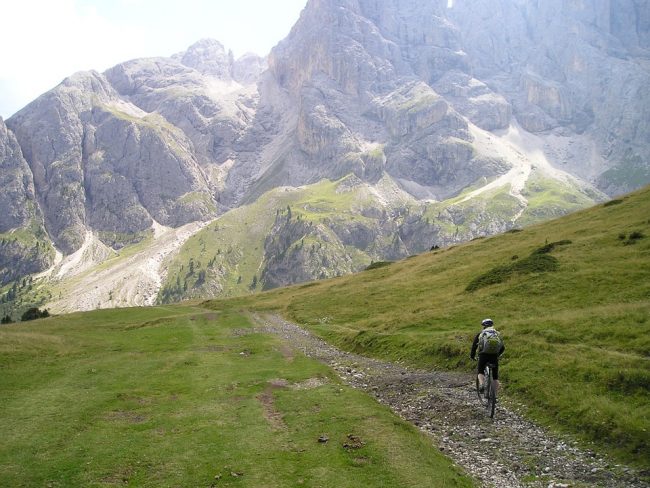Mountain biking isn’t only an ideal way to travel along paths and dirt lanes in the outdoors during the weekend. The mountain bike and cyclotourism combination is possible and also offers various advantages to the cyclotourist compared to a trekking bike. Let’s see what are:
- Possibility to travel in wild places
Since it is designed to run anywhere and with any weather conditions, mountain biking lends you to long journeys in desert lands such as desert and solitary steppes.
The frame is comfortable and durable, the tires have an excellent grip on all types of terrain and the suspension still increases the comfort. Such features make it a perfect bicycle for both off-road travel as well as for a mixture of dirt and asphalt. - Strength
Mountain bike is reliable on all types of terrain and long distances. It’s more strong than a trekking bike and is going to last longer in time. - Availability of ratio
The range of ratio that can be used on a mountain bike is far greater than a road bike. This allows you to pedal with lower metric development but with a higher pedaling frequency (useful on wet or yielding terrain). - Most upright position on the saddle
Mountain biking allows the cyclist to be more erect on the saddle because the center of gravity is moved to the rear wheel. It’s a much more convenient position for those who want to travel many kilometers in a row. - More control
The handlebar of a mountain bike is about 330 mm larger than those of a touring bike.
This means less manoeuvrability, but greater control during pedaling. - Vibrations absorption
Mountain bike components (rear and front suspensions, tires, and padded tubes) allow almost total vibrations absorption due to wheel-to-ground contact, avoiding muscle fatigue. - Modularity and braking power
With the typical mountain bikes brakes, braking is definitely more powerful and modular compared to the brakes of tourist bicycle.
Bringing a mountain bike with you on a trip also has some disadvantages, such as:
- Heaviness
Unless you use carbon fiber one, the classic tourism bikes are lighter than a mountain bike. - Rolling resistance
Mountain bike’s tires are larger than those of a classic bicycle, so bigger will be the track on the ground left by the bike and the friction to win to move forward. In addition, knobbed tires are a big disadvantages on asphalt. - Length of ratios
The transmission of mountain bikes is very useful uphill, but not on the long distances. - Maintenance
Suspensions and other components of mountain bikes are definitely useful, but they need regular maintenance and can break. - No luggage carrier
Given the total impossibility of mounting a luggage carrier, mountain bikes can’t carry cyclotourism bags. The only solution is the bikepacking, that is to fix to the bicycle, bags and sacks specially designed for mountain biking. - Lack of mudguards
Mudguards can be very useful during long journeys but sadly aren’t provided for mountain bikes.

1) Avoid the tires with too pronounced dowels. Better use those with a low and fixed tessellation and a Kevlar guard against puncture.
2) Prefer a mountain bike with only the front suspension, with the locking of the compression of the cleat. Two suspensions are more comfortable on the long distances but consume more energy.
3) Rely on the bikepacking to carry your things.
4) Mountain bikes saddles are very comfortable, designed to absorb the bumps typical of the discipline, but are also very tapered because often you ride out of the saddle on mountain bikes. Evaluate whether this feature can go well for your trip.
5) Acquire mudguards from the manufacturer or universal mudguards.
6) Choose classic transmissions with front triple and nine rear speed.
